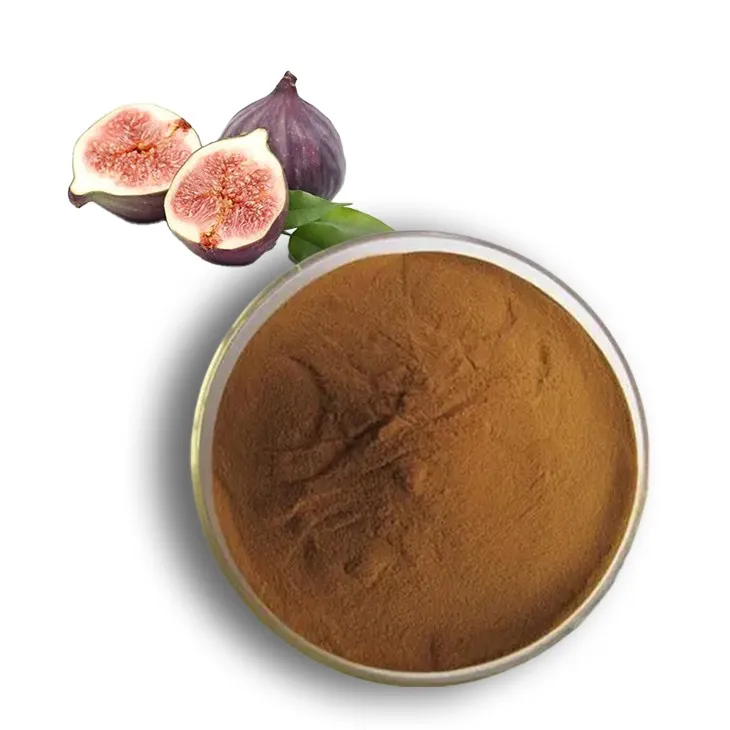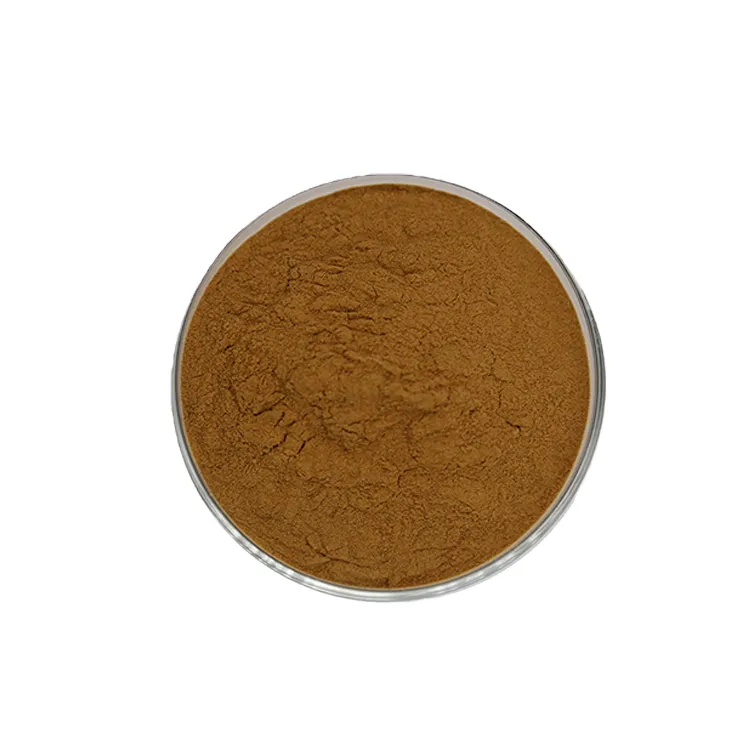- 0086-571-85302990
- sales@greenskybio.com
Fig extract can reduce high blood pressure.
2024-11-12

1. Introduction
High blood pressure, or hypertension, is a widespread health concern affecting a significant portion of the global population. It is often referred to as the "silent killer" as it may not present noticeable symptoms in its early stages but can lead to serious cardiovascular diseases such as heart attacks, strokes, and kidney problems. Conventional treatment for hypertension typically involves lifestyle modifications and the use of pharmaceutical drugs. However, there is growing interest in natural remedies, and Fig Extract is emerging as a potential candidate in the management of high blood pressure.

2. What is Fig Extract?
Fig Extract is derived from the fig fruit (Ficus carica). Figs have been consumed for centuries and are rich in various nutrients. The extract contains a complex mixture of bioactive compounds, including phenolic compounds, flavonoids, and minerals. These components are thought to contribute to its potential health - promoting properties.

3. Bioactive Compounds in Fig Extract
3.1 Phenolic Compounds
Phenolic compounds are abundant in fig extract. These compounds have antioxidant properties, which play a crucial role in reducing oxidative stress in the body. Oxidative stress is associated with hypertension as it can damage blood vessels and disrupt normal physiological functions. By scavenging free radicals, phenolic compounds in fig extract may help protect the endothelium (the inner lining of blood vessels), thereby promoting healthy blood pressure levels.
3.2 Flavonoids
Flavonoids are another important class of bioactive compounds in fig extract. They have been shown to have vasodilatory effects. Vasodilation refers to the widening of blood vessels, which reduces the resistance to blood flow. When blood vessels are dilated, blood pressure is more likely to decrease. Flavonoids achieve this by interacting with the smooth muscle cells in the blood vessel walls, causing them to relax.
3.3 Minerals
Figs are a good source of minerals such as potassium. Potassium is an essential mineral for maintaining normal blood pressure. It works in opposition to sodium in the body. High sodium intake is often associated with increased blood pressure, while potassium helps to excrete sodium through the kidneys. Fig extract, with its potassium content, can contribute to the regulation of the sodium - potassium balance in the body, thus potentially reducing blood pressure.

4. Mechanisms of Action in Reducing Blood Pressure
4.1 Endothelial Function Improvement
The endothelium plays a vital role in regulating blood pressure. As mentioned earlier, the phenolic compounds in fig extract protect the endothelium from oxidative damage. A healthy endothelium can produce substances such as nitric oxide (NO). Nitric oxide is a powerful vasodilator that helps relax blood vessels and lower blood pressure. By enhancing endothelial function, fig extract promotes the production and release of NO, leading to a reduction in blood pressure.
4.2 Renin - Angiotensin - Aldosterone System (RAAS) Modulation
The RAAS is an important hormonal system involved in blood pressure regulation. Fig extract may influence this system. Some of its bioactive compounds could potentially inhibit the activity of renin, an enzyme that plays a key role in the RAAS. When renin activity is reduced, the production of angiotensin II, a potent vasoconstrictor, is decreased. This, in turn, leads to less aldosterone secretion, which helps in reducing sodium and water retention in the body, ultimately resulting in a decrease in blood pressure.
4.3 Anti - Inflammatory Effects
Chronic inflammation is often associated with hypertension. Fig extract's bioactive compounds, particularly its phenolic and flavonoid components, have anti - inflammatory properties. By reducing inflammation in the blood vessels and surrounding tissues, it can help improve blood vessel health and function. Inflammation can cause the blood vessels to become stiff and narrow, increasing blood pressure. By alleviating this inflammation, fig extract can contribute to blood pressure reduction.
5. Scientific Evidence Supporting the Use of Fig Extract for High Blood Pressure
Several scientific studies have been conducted to investigate the effects of fig extract on blood pressure. In animal studies, it has been observed that fig extract supplementation led to a significant decrease in blood pressure. For example, in a study on hypertensive rats, those fed with fig - enriched diets showed lower systolic and diastolic blood pressure compared to the control group. These results suggest that the bioactive compounds in fig extract can have a positive impact on blood pressure regulation in animals.
Although human studies are still relatively limited, some preliminary findings are also promising. A small - scale clinical trial involving hypertensive patients who consumed fig extract for a certain period showed a trend towards a reduction in blood pressure. However, more large - scale, long - term human studies are needed to confirm these findings and to determine the optimal dosage and duration of fig extract supplementation for effective blood pressure management.
6. Comparison with Conventional Hypertension Treatments
6.1 Advantages of Fig Extract
- Natural Origin: Fig extract is a natural product, which may be more appealing to some patients who prefer natural remedies over pharmaceutical drugs. It may also have fewer side effects compared to some medications.
- Multiple Mechanisms of Action: As discussed earlier, fig extract acts through multiple mechanisms to reduce blood pressure, including antioxidant, vasodilatory, and anti - inflammatory effects. This multi - faceted approach may offer a more comprehensive treatment compared to some single - mechanism drugs.
6.2 Limitations of Fig Extract
- Lack of Standardization: Currently, there is a lack of standardization in the production of fig extract. Different extraction methods and sources of figs can result in variations in the composition and potency of the extract. This makes it difficult to ensure consistent and reliable results in its use for blood pressure management.
- Insufficient Evidence: While the existing evidence is promising, it is still not as comprehensive as that for established hypertension medications. More research is needed to fully understand its safety, efficacy, and long - term effects.
7. How to Incorporate Fig Extract in the Diet
7.1 Consumption of Figs
One way to obtain fig extract benefits is by consuming figs directly. Figs can be eaten fresh or dried. They can be added to salads, cereals, or used in baking. However, it should be noted that the amount of fig extract obtained from consuming whole figs may be relatively small compared to using a concentrated extract.
7.2 Fig Extract Supplements
Fig extract supplements are also available in the market. When choosing a supplement, it is important to look for a reputable brand. Check the product label for information on the extraction method, concentration, and any additional ingredients. It is also advisable to consult a healthcare provider before starting any new supplement, especially for those with existing medical conditions or taking other medications.
8. Precautions and Considerations
- Allergic Reactions: Some individuals may be allergic to figs. Before using fig extract, it is important to check for any allergic reactions. Symptoms of fig allergy may include skin rashes, itching, or difficulty breathing.
- Interactions with Medications: If you are taking medications for high blood pressure or other medical conditions, there is a possibility of interactions with fig extract. For example, fig extract may potentiate the effects of blood - thinning medications due to its flavonoid content. Therefore, it is crucial to inform your healthcare provider if you plan to use fig extract.
9. Conclusion
Fig extract shows potential as a natural remedy for reducing high blood pressure through its various bioactive compounds and mechanisms of action. While it has certain advantages such as its natural origin and multiple mechanisms of action, there are also limitations including lack of standardization and insufficient evidence. More research, particularly large - scale human trials, is needed to fully establish its efficacy and safety in the management of hypertension. However, for those interested in natural approaches to health, incorporating figs or fig extract into the diet under the guidance of a healthcare provider may be a viable option to explore in the pursuit of better blood pressure control.
FAQ:
1. How does fig extract reduce high blood pressure?
Fig extract contains bioactive compounds such as flavonoids, phenolic acids, and potassium. Flavonoids have antioxidant and vasodilatory effects, which can relax blood vessels and reduce resistance in the circulatory system. Phenolic acids may also contribute to antioxidant activities and have a positive impact on blood vessel health. Potassium helps in regulating the balance of electrolytes, which can in turn affect blood pressure by promoting sodium excretion and reducing fluid retention.
2. Is fig extract a safe alternative for high blood pressure treatment?
In general, fig extract is considered relatively safe for consumption. However, it should not replace prescribed medications without consulting a healthcare provider. Some individuals may be allergic to figs or their extracts. Also, if someone has underlying health conditions or is taking other medications, there could be potential interactions. But when used under proper medical supervision, it can potentially be a part of a complementary approach to high - blood - pressure management.
3. How much fig extract should be consumed to have an effect on high blood pressure?
There is no one - size - fits - all answer to this question as it can vary depending on factors such as an individual's overall health, the severity of their high blood pressure, and other lifestyle factors. Currently, there is no standard recommended dosage established for fig extract specifically for blood pressure reduction. It is important to start with small amounts and monitor any changes in blood pressure or potential side effects. Consulting a healthcare professional is advisable to determine a suitable amount.
4. Can fig extract be used in combination with other blood pressure medications?
There is a possibility that fig extract can be used in combination with other blood pressure medications, but this should be done under the strict supervision of a healthcare provider. Some components in fig extract may interact with medications, either enhancing or reducing their effectiveness. For example, if fig extract has a significant potassium content and a person is already taking a potassium - sparing diuretic, it could lead to excessive potassium levels in the body. So, communication with a doctor is crucial.
5. Are there any side effects associated with fig extract for blood pressure reduction?
While fig extract is generally well - tolerated, some potential side effects may occur. These can include allergic reactions in individuals who are sensitive to figs. In addition, excessive consumption may lead to digestive issues such as diarrhea or abdominal discomfort due to its fiber content. If fig extract is used as a supplement, there may also be concerns about the quality and purity of the product, which could potentially introduce other risks.
Related literature
- The Role of Natural Products in Hypertension Management: A Focus on Fig Extract"
- "Bioactive Compounds in Fig Extract and Their Impact on Blood Pressure Regulation"
- "Fig Extract: A Promising Complementary Therapy for Hypertension - Clinical Evidence"
- ▶ Hesperidin
- ▶ citrus bioflavonoids
- ▶ plant extract
- ▶ lycopene
- ▶ Diosmin
- ▶ Grape seed extract
- ▶ Sea buckthorn Juice Powder
- ▶ Beetroot powder
- ▶ Hops Extract
- ▶ Artichoke Extract
- ▶ Reishi mushroom extract
- ▶ Astaxanthin
- ▶ Green Tea Extract
- ▶ Curcumin Extract
- ▶ Horse Chestnut Extract
- ▶ Other Problems
- ▶ Boswellia Serrata Extract
- ▶ Resveratrol Extract
- ▶ Marigold Extract
- ▶ Grape Leaf Extract
- ▶ blog3
- ▶ Aminolevulinic acid
- ▶ Cranberry Extract
- ▶ Red Yeast Rice
- ▶ Red Wine Extract
-
Tongkat Ali Extract
2024-11-12
-
Medicinal Marshmallow Extract
2024-11-12
-
Pine bark Extract Powder
2024-11-12
-
Dan Shen Root Extract/Salvia Root Extract
2024-11-12
-
Chaste Berry Extract
2024-11-12
-
Coconut Water Powder
2024-11-12
-
Oat Straw Extract Powder
2024-11-12
-
Lemon Juice Powder
2024-11-12
-
Almond Extract Powder
2024-11-12
-
Agaricus Blazei Extract
2024-11-12





















